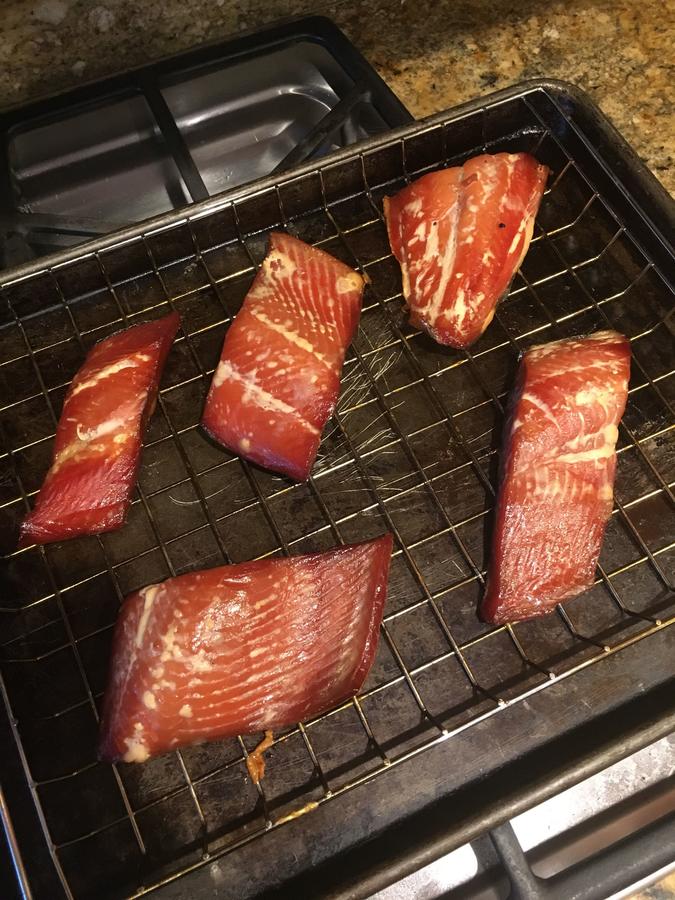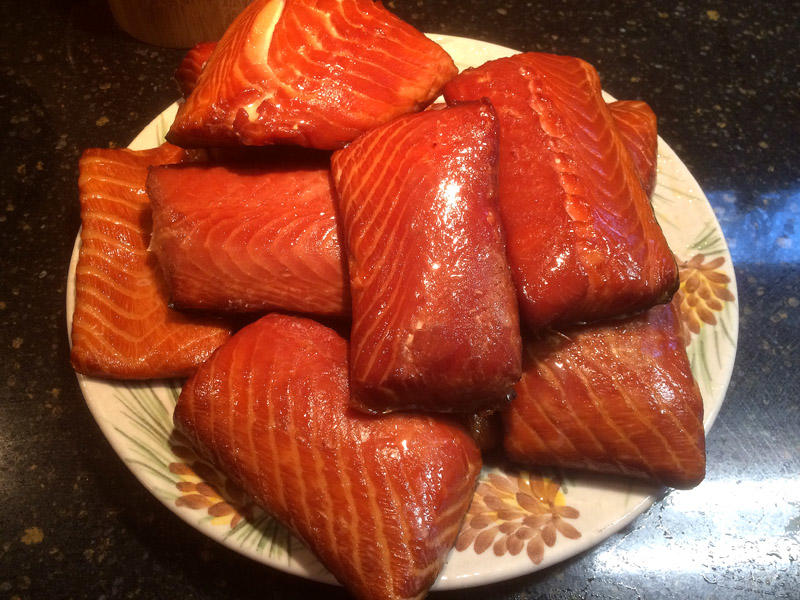ETA:
I didn't know all of this below... I've been on a LONG conference call and did a little research...
At temperatures of 104°F / 40°C and 122°F / 50°C: Proteins in Fish and Meat Begin to Denature (break down into liquid forms that can then seep and migrate out of the meat structure itself.)
A perfect example of this is the albumin that you are seeing on the surface of your salmon.
Some studies have been done that show that the alteration of the pH of the flesh, or soaking the flesh in a 5-10% brine solution can assist in avoiding the denaturing of the protiens.
You said that you brined the filets in a mixture of water, kosher salt, brown sugar, and maple syrup. This mixture should have a pH of ~6-7.5 depending upon your location and it's water quality. The pH adjustment was shown to have been best in the >8 range, but at that point, the caustic nature of the liquid would begin to structurally change your fish (slightly, but it will change over time).
So, the key would be to keep the IT of the fish at <104° f, or to use a brine solution that is >/= 5%. Using the chart below, what was your approximate solution?
To create 8-cups of brine at 2% salinity, use 38 grams of salt. To create 3-cups of brine at a 2% salinity, add the amount of salt called for in the columns under 1-cup (5 grams) and 2-cups (10 grams) which equals 15-grams of salt. If creating a 1% brine, simply divide the 2% salt grams by 50%. To make a 1% brine for 2-cups of water, use half of the 5-grams, ROUND DOWN to 2 grams.
For the brine that a lot of us use, Pop's, the brine solution would be in the range of ~7% (1-Tbs kosher salt = 16.2 grams with 16 tablespoons in a cup, = 259.2 grams of salt in a gallon of water)















